Birth name Richard George Manuel Role Composer Name Richard Manuel | Years active 1957–1986 | |
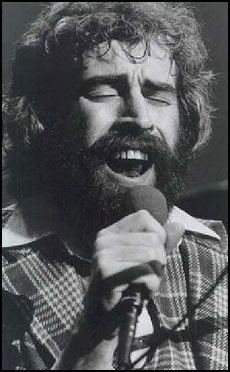 | ||
Born April 3, 1943Stratford, Ontario, Canada ( 1943-04-03 ) Movies Eat the Document, Eliza's Horoscope, Man Outside Similar | ||
Occupation(s) Musician, songwriter | ||
The ghost of richard manuel by steppin in it
Richard George Manuel (April 3, 1943 – March 4, 1986) was a Canadian composer, singer, and multi-instrumentalist, best known as a pianist, lead singer, and occasional drummer of The Band. He was a member of the original band from 1967 to 1976 and the re-formed band from 1983 until his death.
Contents
- The ghost of richard manuel by steppin in it
- Joshua davis music video the ghost of richard manuel original
- Early life and career
- The Hawks
- Big Pink
- Movie role substance abuse move to Malibu
- Back with Dylan
- The Last Waltz
- Session work attempted comeback and continued struggles with substance abuse
- Death
- Posthumous recognition
- Discography
- References
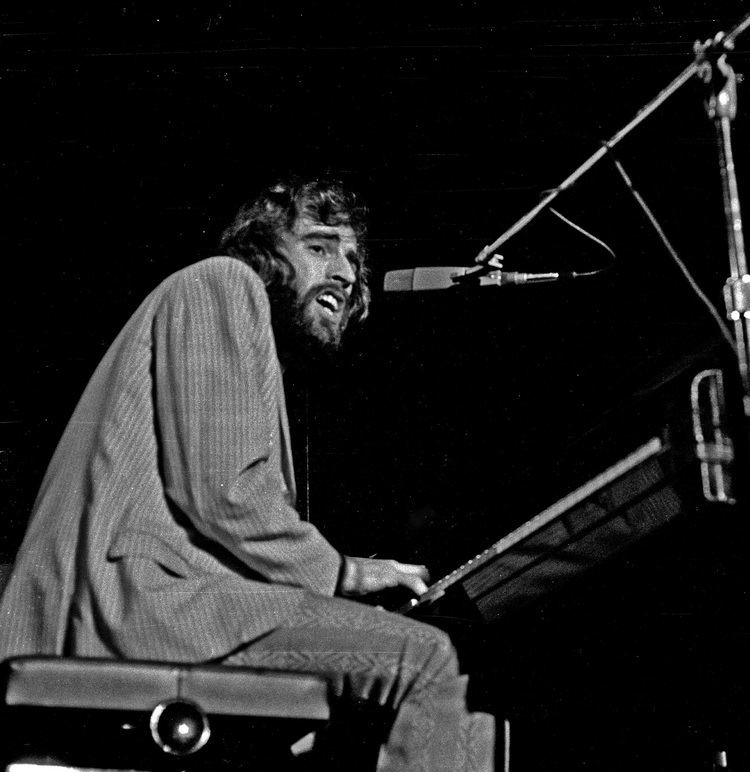
Manuel's singing alternated between a soul-influenced baritone that drew frequent comparisons to Ray Charles and a delicate falsetto. Though The Band had three vocalists sharing lead and harmony parts, Manuel was often seen as the group's primary vocalist.
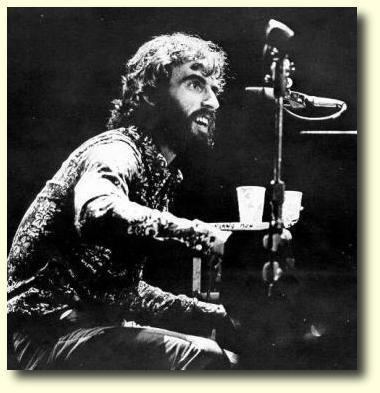
Joshua davis music video the ghost of richard manuel original
Early life and career
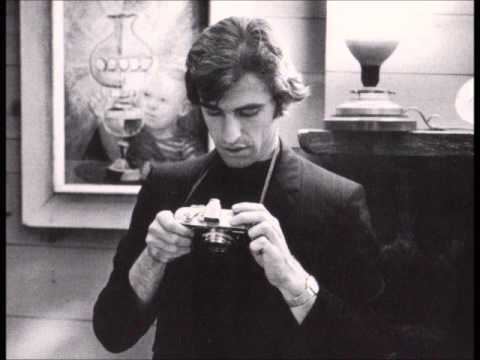
Manuel was born in Stratford, Ontario, Canada. His father, Ed, was a mechanic employed at a Chrysler dealership, and his mother was a schoolteacher. He was raised with his three brothers, and the four sang in the church choir. Manuel took piano lessons beginning when he was nine, and enjoyed playing piano and rehearsing with friends at his home. Some of his childhood influences were Ray Charles, Bobby Bland, Jimmy Reed and Otis Rush.
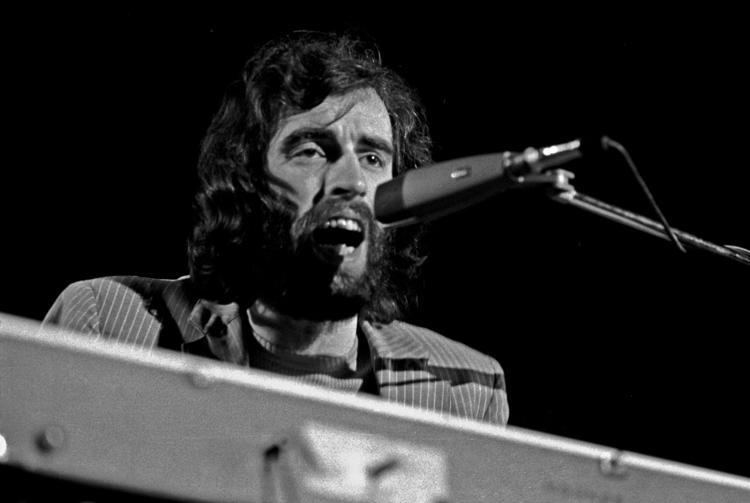
He and three friends started a band when he was fifteen, originally named the Rebels but later changed to The Revols, in deference to Duane Eddy and the Rebels. The group also included Ken Kalmusky, a founding member of Great Speckled Bird, and John Till, a founding member of the Full Tilt Boogie Band. Although primarily known as a vocalist, Manuel also developed his skills as a piano player during his time in the Revols.
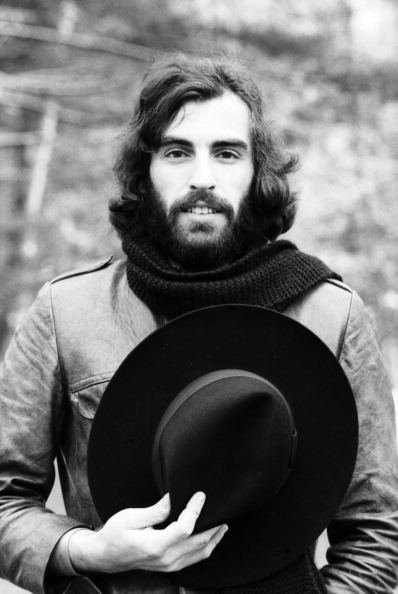
Manuel first became acquainted with Ronnie Hawkins and the Hawks when the Revols opened for them in Port Dover, Ontario. According to Levon Helm, Hawkins remarked to him about Manuel: "See that kid playing piano? He's got more talent than Van Cliburn." The two bands once again connected at the Stratford Coliseum in 1961, when the Revols ended a show featuring the Hawks as headliners. After hearing Manuel singing "Georgia on My Mind", Hawkins hired the Revols' pianist rather than competing with them.
The Hawks
Manuel was eighteen when he joined Hawkins's backing group, the Hawks. At this time the band already consisted of 21-year-old Levon Helm on drums, 17-year-old Robbie Robertson on guitar and 18-year-old Rick Danko on bass; 24-year-old organist Garth Hudson joined that Christmas, followed by two temporary members (saxophonist Jerry Penfound and singer Bruce Bruno). Increasingly antagonized by Hawkins's disdain for marijuana and contemporary music trends, the group left the singer's employ in 1964. Initially, they were known as the Levon Helm Sextet (as Helm had accumulated the most time with Hawkins) before changing their name to the Canadian Squires and then to Levon and the Hawks. With Helm serving as nominal leader because of his longevity with the Hawkins group, it was Manuel who sang most of the songs in the group's repertoire. It was as Levon and the Hawks, after the departure of Penfound and Bruno, that they introduced themselves to their blues hero, Sonny Boy Williamson. They planned a collaboration with Williamson, but he died before their plans could be realized.
In 1965, Helm, Hudson, and Robertson helped back American bluesman John Hammond on his album So Many Roads. Hammond recommended the Hawks to Bob Dylan, who tapped them to serve as his backing band when he switched to an electric sound; through 1966, they toured Europe and the United States with Dylan, enduring the ire of Dylan's folk fans, who subjected the group to hissing and booing.
Big Pink
In 1967, while Dylan recovered from a motorcycle accident in Woodstock, New York, the group moved there also, renting a pink house on 100 acres (0.40 km2) at 2188 Stoll Road (later 56 Parnassus Lane) in nearby West Saugerties, New York. Supported by a retainer from Dylan, they were able to experiment with a new sound garnered from the country, soul, rhythm and blues, gospel and rockabilly music that they loved. As Helm (who was disheartened by the reaction to Dylan's new sound) had been temporarily absent from the group since late 1965, Manuel taught himself to play drums during the hiatus. In the Band era he would occasionally assume the drummer's stool when Helm played mandolin or guitar. His drum style is notably different from Helm's, as on the songs "Rag Mama Rag" and "Evangeline". Manuel's drumming is most prominent on the album Cahoots.
The early months in Woodstock also allowed Manuel and Robertson to develop as songwriters. After recording numerous demos and signing with Albert Grossman, they secured a 10-album contract with Capitol Records in early 1968. They originally signed as "The Crackers" (although "The Honkies" had also been considered). Helm rejoined the fold as sessions got under way for the recording of their debut album, Music from Big Pink. The group proceeded to take what they had learned with Dylan and used one of his songs in the process. They combined it with their idea of the perfect album, switching solos, and singing harmonies modeled after the gospel sound of their musical heroes The Staple Singers. Manuel and Robertson each contributed four songs; among Manuel's contributions was "Tears of Rage," which he co-wrote with Dylan. Covers of "Long Black Veil" and "I Shall Be Released" and the Danko–Dylan collaboration "This Wheel's on Fire" rounded out the album. Music from Big Pink was released with the group name given as simply "The Band." This would be their name for the rest of the group's existence. While only reaching No. 30 on the Billboard charts, the album would have a profound influence on the nascent country rock movement; "Tears of Rage" and Robertson's "The Weight" would rank among the most covered songs of the era. Shortly after the release of the album, the newly financially secure Manuel married his girlfriend, Jane Kristiansen, a model from Toronto, whom he had dated intermittently since the Hawks days. They would become the parents of two children.
Movie role, substance abuse, move to Malibu
In 1970, Manuel acted in the Warner Bros. film Eliza's Horoscope, an independently distributed Canadian drama written and directed by Gordon Sheppard. He portrayed "the bearded composer," performing alongside Tommy Lee Jones, former Playboy Bunny Elizabeth Moorman, and Lila Kedrova; Robertson appeared as an extra. Taking four years to complete, it was not released until 1975.
During this period, Manuel's "Blues for Breakfast" (an early Woodstock-era composition) was covered by Cass Elliot on Dream a Little Dream (1968); shortly thereafter, Joan Baez performed an a cappella arrangement of "Tears of Rage" on Any Day Now (1968) and Karen Dalton included her rendition of "In a Station" on In My Own Time (1971). However, he was credited with writing only three songs ("When You Awake," "Whispering Pines," and "Jawbone") on The Band (1969) and two ("Sleeping" and "Just Another Whistle Stop") on Stage Fright (1970); all of these compositions were credited as collaborations with Robertson, who had assumed dominance in the group's affairs with Grossman. According to Helm,
When the Band came out we were surprised by some of the songwriting credits. In those days we didn't realize that song publishing–more than touring or selling records–was the secret source of the real money in the music business. We're talking long term. We didn’t know enough to ask or demand song credits or anything like that. Back then we'd get a copy of the album when it came out and that's when we'd learn who'd got the credit for which song. True story.... When the album [The Band] came out, I discovered I was credited with writing half of "Jemima Surrender" and that was it. Richard was a co-writer on three songs. Rick and Garth went uncredited. Robbie Robertson was credited on all 12 songs. Someone had pencil-whipped us. It was an old tactic: divide and conquer. I went on to express [to Robertson] my belief in creating music with input from everyone and reminded him that all the hot ideas from basic song concepts to the mixing and sequencing of our record, were not always exclusively his. I complained that he and Albert had been making important business decisions without consulting the rest of us. And that far too much cash was coming down in his and Albert's corner. Our publishing split was far from fair, I told him, and had to be fixed. I told him that he and Albert ought to try and write some music without us because they couldn't possibly find the songs unless we were all searching together. I cautioned that most so-called business moves had fucked up a lot of great bands and killed off whatever music was left in them. I told Robbie that the Band was supposed to be partners. Since we were teenagers, we banded against everything and anyone that got in our way. Nothing else–pride, friends, even money–mattered to the rest of us as much as the band did. Even our families had taken second place when the need arose. I said "Robbie, a band has to stick together, protect each other support and encourage each other and grow the music the way a farmer grows his crops." Robbie basically told me not to worry because the rumors were true: Albert was going to build a state-of-the-art recording studio in Bearsville and wanted us to be partners in it with him. So any imbalance in song royalties would work out a hundred fold within the grand scheme of things. We would always be a band of brothers with our own place. No more nights in some company's sterile studio...All we needed to do was play our music and follow our hearts. Well, it never quite worked out that way. We stayed in the divide and conquer mode, a process that no one ever seems to be able to stop to this day.
By Cahoots (1971), producer John Simon felt that "Robbie didn't... consciously intimidate him... but when you met Robbie he was so smooth and urbane and witty, whereas Richard was such a gee-golly-gosh kind of guy." The influence of Manuel's increasing use of heroin may have also contributed to the diminution of his songwriting abilities.
Throughout 1972, Manuel's alcoholism was one of a variety of factors (including Robertson's own writer's block) that began to impede The Band's recording and performance schedule. Years later, Robertson opined that "he scared us to death... we didn't know what the next day might bring, what would come out of this monster that had seeped out of the woodwork." Although Jane Manuel lamented that "people thought it was amusing to watch this guy drowning," the Manuels briefly separated during this period but reconciled before the impending birth of their second child, Josh. According to roommate Mason Hoffenberg (who roomed with the musician in 1972–1973 at the request of Grossman), Manuel had "stopped [using heroin] and got into this drinking thing... I'm supposed to head off all the juvenile dope dealers up here who hang around rock stars. So I answer the phone and say Richard's not here. He's not allowed to answer the phone. And I go around privately and tell them to leave him alone because he's really going to kill himself. But if they actually come over to the house, he can't say no. He's brilliant, that guy. An incredible composer. But we just sit around watching The Dating Game, slurping down the juice, laughing our asses off, then having insomnia, waking up at dawn with every weird terror and anxiety you can imagine. The four other guys in the Band are serious about working and he's really hanging them up. They can't work without him and there's no way to get him off his ass. He feels bad about it, he's just strung out."
In 1973, the group once again followed the lead of Dylan by relocating to Malibu, California. Before leaving the Hudson Valley, they convened at Bearsville Studios to record an album of vintage rock and roll cover songs (many of which were seldom performed by The Hawks) entitled Moondog Matinee in homage to Alan Freed's radio show. Although Manuel was initially reluctant to perform, the album elicited some of his finest vocal performances, including renditions of the Bobby "Blue" Bland R&B standard "Share Your Love with Me," The Platters's "The Great Pretender," and a tongue-in-cheek version of Jerry Leiber and Mike Stoller's obscure "Saved." Helm had this to say about Manuel during this period: "[H]e was drinking pretty hard, but once he got started, man: drums, piano, play it all, sing, do a lead in one of them high, hard-assed keys to sing in. Richard just knew how a song was supposed to go. Structure, melody; he understood it."
Back with Dylan
The Band gradually resurfaced on the live circuit. Following a warmup show in Osaka, Japan in July 1973, they played to receptive audiences at the Summer Jam at Watkins Glen and on a double bill with the Grateful Dead at Jersey City's Roosevelt Stadium two days later. In the autumn, the group backed up Dylan on Planet Waves, his first album of original songs in three years, before being enlisted to serve as his backup group on his first tour in eight years.
The forty concerts of the Bob Dylan and the Band 1974 Tour, from January 3 to February 14, 1974, were meandering musical marathons featuring two sets of Dylan backed by The Band, two Band sets, and a Dylan acoustic set. The ensuing live album from the tour, Before the Flood, reveals that Manuel was still capable of reaching the breathtaking falsetto on "I Shall Be Released".
The Last Waltz
The Band continued performing throughout 1974, supporting Crosby, Stills, Nash and Young alongside Joni Mitchell, Jesse Colin Young and The Beach Boys on a grueling summer stadium tour. By 1975, Robertson had expressed his dissatisfaction with touring and was acting in an increasingly parental capacity, as the move to Malibu and his refusal to allow the group to join Bearsville Records had seen him take the managerial reins on a de facto basis from an increasingly diffident Grossman. According to Helm, Manuel (who lived in a variety of rented houses throughout the period, including properties owned by Goldie Hawn and Keith Moon) was now consuming eight bottles of Grand Marnier every day on top of a prodigious cocaine addiction, factors that ultimately precipitated his divorce from Jane Manuel in 1976. While living in the Hawn house, Manuel attempted to commit suicide (by self-immolation and shooting himself in the head with a BB gun) on at least two occasions. Nevertheless, he developed a kinship with the similarly despondent Eric Clapton and was a driving force behind the sessions that make up the guitarist's No Reason to Cry (1976). The album was recorded at The Band's new Shangri-La Studios, where Manuel lived for about a year in a bungalow that had once served as the stable for Bamboo Harvester, the horse that portrayed the titular character on the 1960s sitcom Mister Ed. Manuel gave Clapton the song "Beautiful Thing" (a 1967 Band demo that Danko helped him finish) and provided vocals for "Last Night."
On the group's final full-fledged tour in the summer of 1976, Manuel was still recovering from a car accident earlier in the year; several tour dates were subsequently canceled after a power-boating accident near Austin, Texas that necessitated the hiring of Tibetan healers in a scenario reminiscent of Robertson's pre-show hypnosis before their first concert as The Band at San Francisco's Winterland Ballroom in April 1969. The quality of the shows was frequently contingent upon Manuel's relative sobriety. As he could no longer sustain the high vocal register of "Tears of Rage" or "In a Station," his most notable contributions were confined to impassioned, raging versions of the prophetic "The Shape I'm In," "Rockin' Chair" and "King Harvest (Has Surely Come)."
The Band played its final show as its original configuration at Winterland on Thanksgiving Day of 1976. The concert was filmed in 35 mm by Robertson confederate and longtime Band fan Martin Scorsese for the documentary The Last Waltz. Manuel can be heard, but barely seen, singing "I Shall Be Released," surrounded by guest stars. While Manuel's famed sense of humor and warm, congenial nature emerged in the interview segments, so did his shyness, deferential attitude – and inebriation. Initially the group only intended to end live performances as The Band, and each member was initially kept on a retainer of $2,500 per week by Warner Brothers. However, by 1978, the group had drifted apart.
Session work, attempted comeback and continued struggles with substance abuse
Taking advantage of this new solace, Manuel moved to Garth Hudson's ranch outside Malibu. He entered an alcohol and drug rehabilitation program, becoming clean and sober for the first time in years in August 1978. Additionally, he was eventually remarried to his longtime girlfriend, Arlie Litvak. Having initially becoming enamored of Manuel after hearing "Lonesome Suzie," the Toronto-born, 21-year-old Litvak became acquainted with the singer on the 1974 tour before moving into the Moon house in 1977. In 1980, he contributed electric piano and clavinet to Happy Traum's Bright Morning Stars and background vocals to Hudson's Music for Our Lady Queen of the Angels.
By 1980, Danko and Manuel had begun to tour clubs regularly as a semi-acoustic duo; these concerts would continue into the Band reunion era and often included fellow Woodstock habitue Paul Butterfield as a special guest. Along with Hudson, Manuel played on several instrumental cues composed by Robertson for the soundtrack of Raging Bull (1980). Manuel and Hudson also contributed to "Between Trains," a new song by Robertson that appeared on the soundtrack of The King of Comedy (1983), and the original soundtrack of Kent State, a 1981 television film based on the Kent State shootings. In 1981, he played little-publicized gigs in L.A.-area clubs with The Pencils, an ensemble that included vocalists/multi-instrumentalists Marty Grebb and Terry Danko, founding Blues Image percussionist Joe Lala and former Beach Boys drummer Ricky Fataar. Although he continued to grapple with writer's block, Manuel wrote a new song, "Was That Any Way to Say Goodbye," with the younger Danko and Grebb. A year later, he contributed piano to Willie Nelson and Webb Pierce's 1982 remake of "In the Jailhouse Now" (a country hit for the latter in 1955) and background vocals to "Rivers of Tears" on Bonnie Raitt's acclaimed Green Light.
The Band reformed in 1983 without Robertson, who permanently forsook touring after The Last Waltz. Instead, guitarist and Helm protege Jim Weider augmented the returning four members along with a variety of irregular additional musicians, including the Cate Brothers. Having reclaimed some of his vocal range lost in the years of drug abuse, Manuel performed old hits such as "The Shape I'm In", "Chest Fever", and "I Shall Be Released" with new conviction alongside personal favorites such as Cindy Walker and Eddy Arnold's "You Don't Know Me" and James Griffin and Robb Royer's "She Knows."
By the time of the group's reformation, Danko, Helm and their families had already moved back to the Woodstock area from Malibu; Manuel returned with his wife in the spring of 1984. In poor health and fearing that he had contracted AIDS from decades of promiscuity and drug abuse, he contemplated making a Robertson-produced solo album and resumed using cocaine, heroin and alcohol; on one occasion, Manuel absconded with journalist and old friend Al Aronowitz's record collection in a midnight burglary to fund his addictions. Following a detoxification stint at the behest of Albert Grossman, Manuel enjoyed several months of sobriety despite failing to vanquish his drug use. He undertook a successful solo residency (centered around "his favorite Ray Charles songs" and "Tin Pan Alley classics") at The Getaway, a club midway between Woodstock and nearby Saugerties, New York; guests such as Danko and Weider frequently sat in. During this period, Manuel also co-wrote a new song, "Breaking New Ground," with Gerry Goffin and Carole King. However, he ultimately "fell off the wagon with a thud" in the spring of 1985.
In addition to their other activities, Manuel and Danko toured throughout 1985 with "The 20th Anniversary Tribute to The Byrds," a tribute group led by founding Byrd Gene Clark that also included former Flying Burrito Brothers and Firefall member Rick Roberts, former Beach Boys guitarist Blondie Chaplin and former Byrds Michael Clarke and John York. A number of concert promoters began to shorten the band's name to "The Byrds" in advertisements and promotional material. As the band continued to tour throughout 1985, their agent decided to shorten the name to "The Byrds" permanently, eliciting displeasure from co-founders Roger McGuinn, David Crosby and Chris Hillman. Although Michael Clarke continued working with a similar group, Clark heeded their complaints and folded the group.
Throughout this period, Manuel continued to participate in several projects in addition to his road work, including the recording of the Ethiopian famine relief charity single "Tears Are Not Enough" by the ad hoc Canadian supergroup Northern Lights. The song was eventually included on the We Are the World album. Along with Hudson on keyboards, Manuel also contributed background vocals to Tom Petty and the Heartbreakers's "Best of Everything" (co-produced by Robertson) on Southern Accents.
In a March 1985 interview with Ruth Albert Spencer of the Woodstock Times, he expressed equivocation toward The Band's professional direction at a time when the group was relegated to playing theaters and clubs as headliners and support slots in larger venues for onetime peers such as the Grateful Dead and Crosby, Stills and Nash: "I sobered up and I pay a lot closer attention when I realize what we threw away. We didn't really throw it away, we benched it and in just this last year and a half I've seen millions of dollars go by...doors open, but we haven't taken advantage of it. That's why I'm irked to the point of just saying, 'Fellas, this is it, I'm going on with my own career.' So I've been planning how to catapult this whole thing with myself into a position where I can remain occupied all the time...and have some work at all times, because it's the down time that drives me crazy. I get nuts when I'm not working. When there's nothing to look forward to, when there's no work. Not that I won't play with the Band, anytime, I'm there a thousand percent, whenever, whatever the Band is, 'cause it's certainly not one person. The Band is five people and anything less than four is just a taste of what the Band is."
Death
On March 4, 1986, after a gig at the Cheek to Cheek Lounge in Winter Park, Florida (a suburb of Orlando, Florida), Manuel committed suicide. He had appeared to be in relatively good spirits at the concert but ominously "thanked [Hudson] profusely for twenty-five years of good music and appreciation" as the latter musician packed his keyboards and synthesizers to be shipped to the next venue after the show. Danko (who also struggled with substance abuse) confronted Manuel about his alcohol use after the show. The Band eventually returned to the Langford Hotel, down the block from the Cheek to Cheek Lounge, and Manuel talked with Helm about music, people and film in Helm's room. According to Helm, at around 2:30 in the morning, Manuel said he needed to get something from his room. Upon returning to his room, he awoke Arlie Litvak Manuel, who observed that "he was all pissed off about something”; Manuel claimed that his frustration stemmed from the quality of the piano at the venue. When Litvak Manuel enjoined him to come to bed, he laid down with his clothes on. After she resumed sleeping, it is believed that he finished one last bottle of Grand Marnier before hanging himself in the bathroom sometime before 3:30. Litvak Manuel discovered his body along with the depleted bottle of liquor and a small amount of cocaine the following morning. He was buried a week later in his hometown of Stratford, Ontario.
At the end of March, Danko declared, "I can't believe in a million years that he meant for that to happen. There was just no sign (...) I have to think this was just a goddamned silly accident." A blood toxicology report indicated that Manuel was drunk and had ingested cocaine within 12 to 24 hours of his death.
Posthumous recognition
Although Manuel died before The Band recorded their final three albums, two songs featuring him on lead vocals, recorded in the 1980s, were included on the first two of these albums: "Country Boy," on Jericho (1993), and "She Knows," on High on the Hog (1996).
In 1994, Manuel was posthumously inducted into the Rock and Roll Hall of Fame as a member of The Band. In 2015, he was inducted into the New York Blues Hall of Fame.
In 2002, the Japanese label Dreamsville Records released Whispering Pines: Live at the Getaway, which contains selections from a solo performance by Manuel at The Getaway in October 1985.
Robbie Robertson's "Fallen Angel" (1987), Ronnie Hawkins's "Days Gone By" (1995) and The Band's "Too Soon Gone" (1993) are all tributes to Manuel.
Eric Clapton's 1986 album, August, features his tribute to Manuel, entitled "Holy Mother." The San Francisco–area group The Call, who had collaborated with Hudson and Robertson, dedicated the video for their 1986 single "Everywhere I Go" to Manuel. Counting Crows recorded the song "If I Could Give All My Love (Richard Manuel Is Dead)," released on their 2002 album Hard Candy. The Drive-By Truckers' song "Danko/Manuel" was released on their album The Dirty South in 2004.
Head of Femur included "Song for Richard Manuel" on their 2005 release, Hysterical Stars. In 2008, the Michigan roots quartet Steppin' In It released the album Simple Tunes for Troubled Times, which contains the song "The Ghost of Richard Manuel," while Isaac Gillespie's album 1971 features "Richard Manuel the Pacifier." Ray Lamontagne referred to the singer during his performance on the BBC program Songwriter's Circle. In 2012 Black Prairie released A Tear in the Eye Is a Wound in the Heart, which includes the song "Richard Manuel". In a 2016 interview on his "WTF" podcast, Marc Maron and Roger Waters discussed their mutual love for The Band, with Waters ruminating on the beauty of Manuel's voice.
An article about Manuel and Rick Danko by Allen St. John was published on Forbes.com on April 19, 2012.
